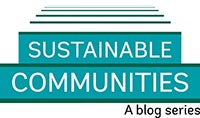
Singapore: the beautiful city state, famed for its lush gardens, splendid food, culturally diverse communities, and the cocktail Singapore Sling. I was there last week for the World Bank’s 2016 Urban Week. The event brought together leading city officials from all over the world and staff from international organizations. It was an excellent exchange on how to tackle urban planning in a sustainable and integrated way. One lesson that emerged from the gathering is that cities that are resilient to natural disasters are also more economically competitive . Singapore is itself a prime example of a city that has understood the importance of connecting disaster risk management, urban planning, and quality living.
I currently live in Lao PDR. This country faces some of the same problems that Singapore is confronted with, including flooding. As Laos continues its social and economic development, the country would do well in keeping some of Singapore’s urban innovations in mind so as to avoid creating cities that become disaster hotspots. The planners at the Singapore Urban Redevelopment Authority as well as the National Water Agency have identified natural disasters and climate change as serious challenges to development. They are an example to follow when it comes to implementing key disaster risk management strategies, such as combining green (i.e. natural) and grey (i.e. engineered) solutions and using urban revitalization and multi-purpose infrastructure to manage disaster risk.
For example, Singapore’s drainage and water retention infrastructure often doubles as parks. Singapore aspires to be a ‘City in a Garden’ and it is well on its way . The city preserves its trees and implements a strategic tree planting program that not only reduces flood risk but also improves water quality and stores carbon. Despite its severely limited space, the city is continuing to expand its green spaces, and it plans to have 0.8 hectares of land for parks per 1,000 citizens. When floods occur, the parks serve as flood retention areas. Many of these efforts are constitutive of the impressive ABC (Active, Beautiful and Clean) Waters Program. By integrating drains in parks, this program creates beautiful green spaces and rivers for all to enjoy. Wetlands, vegetable patches, cleansing biotopes, nature trails, tree plantations or butterfly gardens can all be found at the ABC drainage sites.
The city has also built reservoirs which hold flood waters in the event of heavy rain and which simultaneously are utilized as fresh water sources for the city. One example of a multi-purpose reservoir is the Marina Barrage which offers a 3 in 1 package. First, the facility pumps excess storm water out to the sea by means of pumps. Second, it provides water for the city. Third, it is a popular destination for outdoor activities in virtue of having pedestrian bridges, green viewing decks, and water sports opportunities.
Lao PDR has proven that it is committed to reducing disaster risk and has mainstreamed resilience into some of its planning documents and sectors. As Laos’s urban areas grow, the country can benefit from integrating some of Singapore’s commendable steps into its urban plans to prepare its cities for the future. Reducing the impact of natural disasters is important for Lao PDR to protect its valuable resources and wonderful people. I was thinking of this when I, on my return, enjoyed a beautiful sunset over the Mekong, where the sundowner of choice is not the famed cocktail from Singapore but Laos’ own classic: the Beerlao.



Join the Conversation